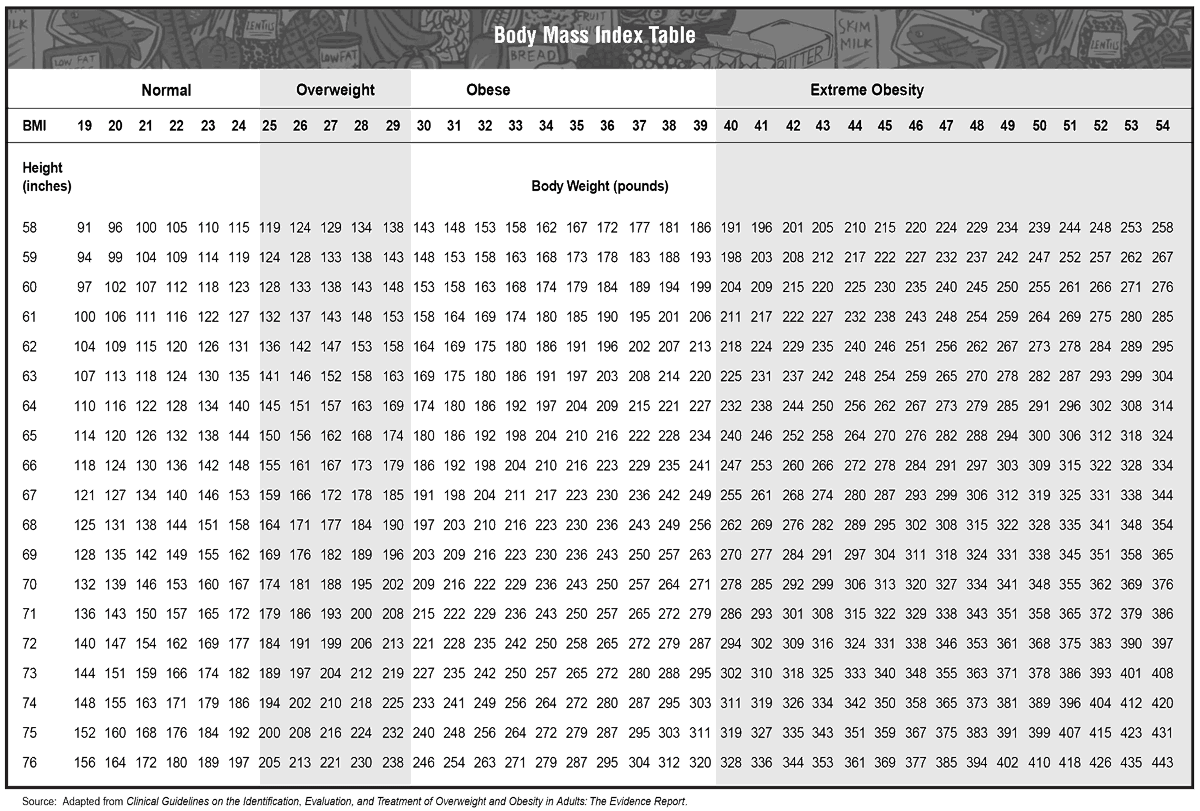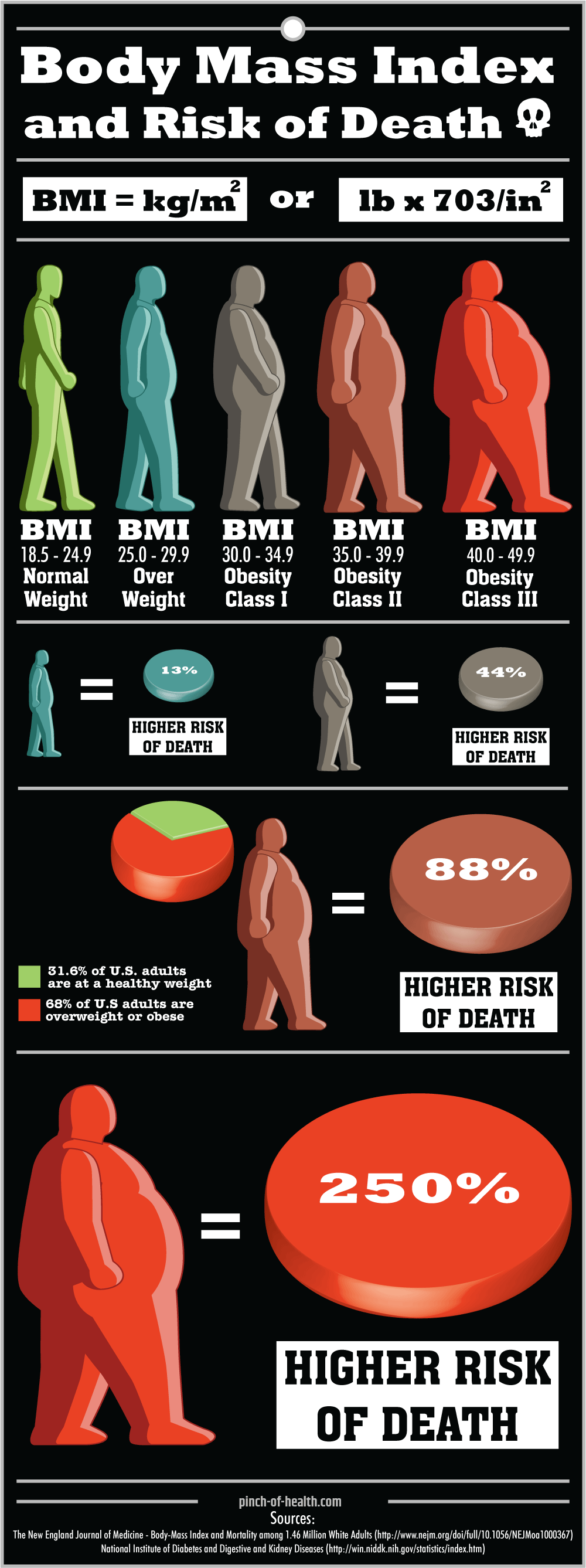BMI formula
Body Mass Index (BMI) is a simple index of weight for height which is widely used to categorize underweight, overweight and obesity. BMI is bodyweight (kg) divided by height (m) squared (BMI = 70 kg / (1.75 m2) = 70 / 3.06 = 22.9). Overweight is typically defined as a BMI of 25 to 29.9, and obesity is defined as a BMI of 30 or more, and severe obesity is defined as a BMI of 40 or more.
Body Mass Index can easily be calculated with the body mass index calculator without the need of costly devices. Having said that, BMI categories don’t take into consideration several factors like frame size and muscle mass, and although BMI can be used for most men and women, it does have some limitations:
It might overestimate body fat in sports people as well as people that have a muscular build.
It might underestimate body fat in elderly people as well as people that have lost muscle.
In spite of this, BMI categories are frequently considered to be an adequate tool for determining if sedentary people are underweight, overweight or obese. Body mass index is an estimate of body fat and a good gauge of your risk for diseases that can occur with more body fat. The higher a person’s body mass index, the higher the risk for a number of diseases like high blood pressure, heart disease, type 2 diabetes, breathing problems, gallstones, and certain cancers.
An analysis of studies and the accompanying Infographic below the BMI calculator for adults demonstrates quite clearly how body mass index is associated with risk of death.1✅ JOURNAL REFERENCE
DOI: 10.1016/0021-9681(72)90027-6
The analysis has revealed that a body mass index between 20.0 and 24.9 is associated with the lowest risk of mortality from any cause in healthy non smoker adults.
The researchers also included accurate estimates of the increased risk of death of overweight and obese individuals in comparison to individuals with a BMI of 20.0 to 24.9. Earlier research which looked at the risks of being overweight had been inconclusive, with a few revealing only a slightly higher risk of death while others showed a lower risk.
With this huge analysis, researchers pooled data coming from nineteen long term studies that followed 1.46 million participants from 5 to 28 years, dependent upon the actual study.
The researchers revealed that healthy non smoker women that had been overweight were 13% more likely to die within the research follow up time period compared to those having a BMI in between 22.5 and 24.9. Women classified as obese or severely obese stood a significantly higher risk of death. Compared to a BMI of 22.5 to 24.9, the study reported a 44% increased risk of death for those having a BMI of 30.0 to 34.9; an 88% increase in risk of death for individuals with a BMI of 35.0 to 39.9; and a 250% greater risk of death for those whose BMI was 40.0 to 49.9. Outcome was generally equivalent for men. For women and men combined, for each 5 increased BMI units, the study found a 31% increase in risk of death.
BMI calculator for women and men
BMI for kids and teens
BMI for adults is the same for male and female and is not associated with age. Body mass index for children and teens is measured a bit differently. The rate of development is different for boys and girls, and different ages have a different amount of body fat. This is why children’s BMI measurements take age and sex into consideration.
BMI chart calculator
Body mass index can also be worked out by using the BMI chart calculator below. Find your height the left hand side of the chart, and then your body weight on the right in the corresponding row. Your BMI can be located at the top of the chart.




